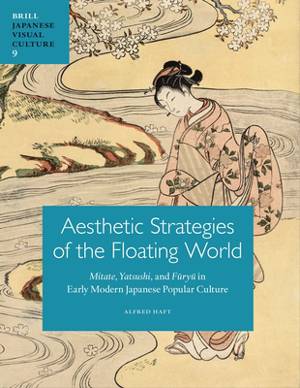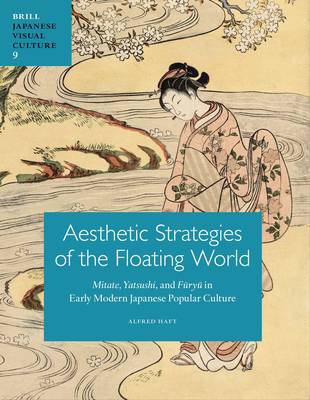
- Afhalen na 1 uur in een winkel met voorraad
- Gratis thuislevering in België vanaf € 30
- Ruim aanbod met 7 miljoen producten
- Afhalen na 1 uur in een winkel met voorraad
- Gratis thuislevering in België vanaf € 30
- Ruim aanbod met 7 miljoen producten
Zoeken
Aesthetic Strategies of the Floating World
Mitate, Yatsushi, and Fūryū In Early Modern Japanese Popular Culture
Alfred Haft
€ 209,45
+ 418 punten
Omschrijving
Japan's classical tradition underpinned almost every area of cultural production throughout the early modern or Edo period (1615-1868). This book offers the first in-depth account of three aesthetic strategies--unexpected juxtaposition (mitate), casual adaptation (yatsushi) and modern standards of style (fūryū)--that shaped the way Edo popular culture and particularly the Floating World absorbed and responded to this force of cultural authority. Combining visual, documentary and literary evidence, Alfred Haft here explores why the three strategies were central to the life of the Floating World, how they expanded the conceptual range of the
popular woodblock print (ukiyo-e), and what they reveal about the role of humor in the Floating World's relationship with established society. Through a critical analysis of prints by major artists such as Harunobu, Koryūsai, Utamaro, Eishi and Hiroshige, Aesthetic Strategies of the Floating World shows how the strategies made ukiyo-e not merely the by-product of a demimonde, but an agent in the social and
cultural politics of their time.
popular woodblock print (ukiyo-e), and what they reveal about the role of humor in the Floating World's relationship with established society. Through a critical analysis of prints by major artists such as Harunobu, Koryūsai, Utamaro, Eishi and Hiroshige, Aesthetic Strategies of the Floating World shows how the strategies made ukiyo-e not merely the by-product of a demimonde, but an agent in the social and
cultural politics of their time.
Specificaties
Betrokkenen
- Auteur(s):
- Uitgeverij:
Inhoud
- Aantal bladzijden:
- 216
- Taal:
- Engels
- Reeks:
- Reeksnummer:
- nr. 9
Eigenschappen
- Productcode (EAN):
- 9789004209879
- Verschijningsdatum:
- 3/12/2012
- Uitvoering:
- Hardcover
- Formaat:
- Genaaid
- Afmetingen:
- 196 mm x 251 mm
- Gewicht:
- 884 g

Alleen bij Standaard Boekhandel
+ 418 punten op je klantenkaart van Standaard Boekhandel
Beoordelingen
We publiceren alleen reviews die voldoen aan de voorwaarden voor reviews. Bekijk onze voorwaarden voor reviews.











